
Spend any time on the highways and it’s clear that plenty of drivers don’t understand some of the basic rules of the road. While laws can differ from state to state, there are some of the general traffic rules drivers often get wrong. Here’s what they are—and what’s the best way to proceed:

Passing a bus
No question about this rule: When the red lights on a school bus are flashing, drivers from all directions are required to stop until the lights go out. But when it comes to a city bus, you are allowed to go around one when it is stopped. Be sure to proceed with caution, of course, because people who have gotten off the bus made be crossing the street.
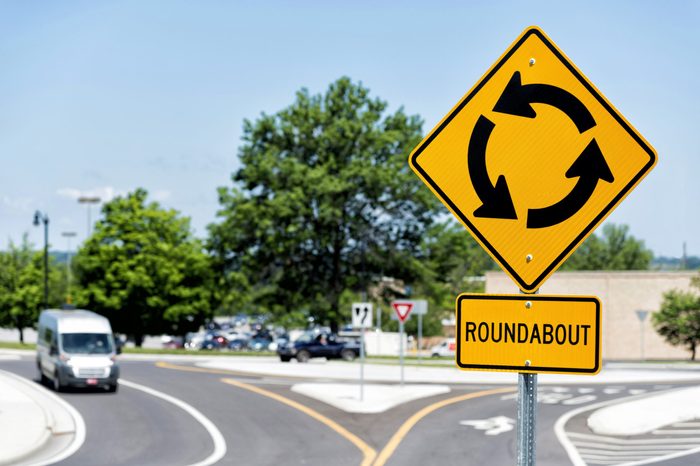
Entering a traffic circle
The purpose of a traffic circle is to replace a four-way stop and keep traffic flowing. But driving in a roundabout can be nerve-wracking, especially if it’s in an area where you don’t know well. The secret? Yield to your left and know where your exit is. “And if you mess it up, you can always go around the circle again,” notes Bob Gillmer, president of Driving Schools Association of the Americas. Once you’re through the traffic circle, find out some tips for scary driving situations.
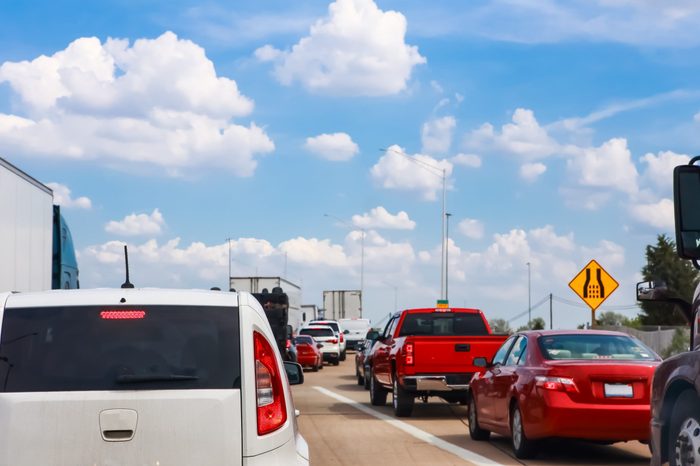
Merging onto a highway
The approach to a highway is called an acceleration ramp in most places for a reason. “I tell people don’t worry about your speed, just get into the flow and you can adjust your speed afterward,” Gillmer says. “People get unnerved by that, but it works very well when you’re brave enough to do it.” But if you’re not able to merge, you should pull onto the shoulder until you see an opportunity to join the flow of traffic. “What they can’t do is just look dead ahead and close their eyes and hang on for dear life,” Gillmer adds. These are things you’re doing that your car mechanics wouldn’t.
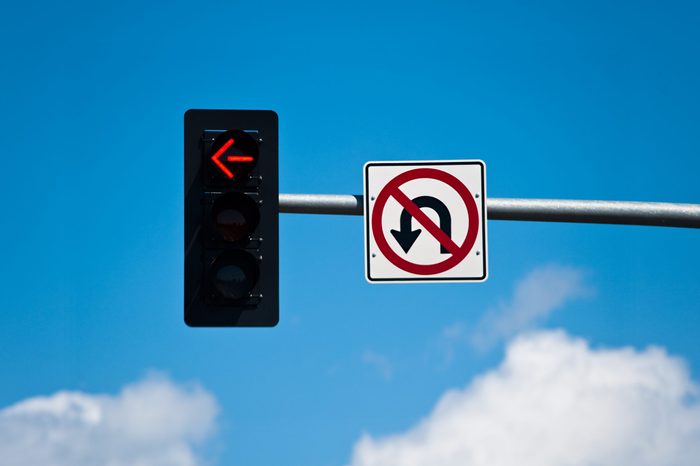
Making a U-turn
Unless there’s a posted sign prohibiting U-turns, you can make one. That said, it’s not recommended that you do so on two-lane roads. But at intersections where there are multiple lanes, unless there’s a sign, go ahead—but proceed with caution. Speaking of safety, here are some things you’re doing in your car—but shouldn’t be.
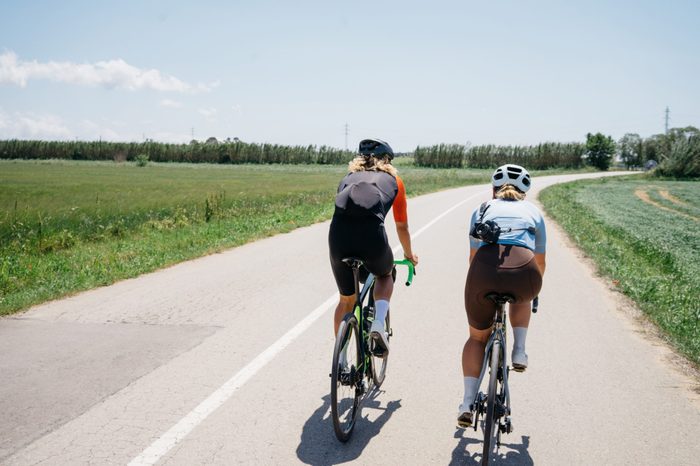
Passing a bicyclist
What if you’re driving on a curvy road and you come up upon a cyclist? The general rule is that you should give the bicyclist at least four feet of space when you pass them, even if it means crossing the center line. But if you can’t give the cyclist that space without interfering with oncoming traffic, you should yield to the cyclist until you can give them that space. The same rule applies with vehicles that stop frequently, such as UPS trucks or garbage trucks.
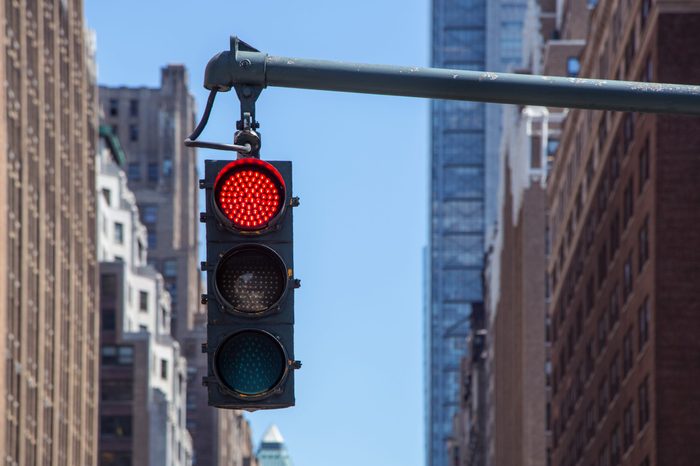
Making a right on red
On most roadways, if there’s no sign that says you can’t make a right on red, you should go ahead and do so. One big exception? New York City. Gillmer notes that the Big Apple is the opposite of the rest of the world because you’re not allowed to make a right on red there unless there’s a sign that says you can. Either way, you should still come to a full stop before making the right on red. “It doesn’t mean you just cruise right on through and make a right turn without stopping,” Gillmer says.
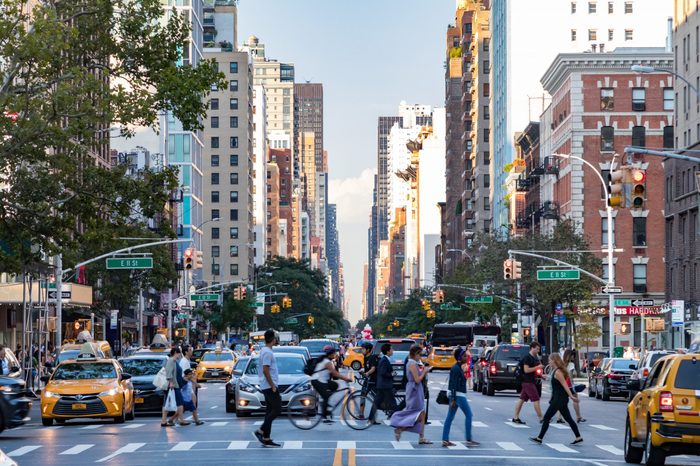
A pedestrian in a crosswalk
The general rule is that drivers must yield to pedestrians in crosswalks. That said, if people are standing on a corner and don’t appear to be crossing the street yet, you should proceed with caution, but you’re not required to stop for them until they enter the crosswalk. In the market for a new car? Make sure to look for these car safety features.
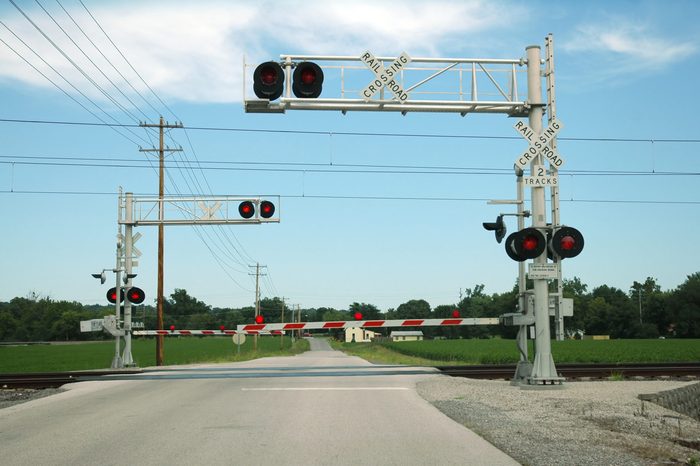
Crossing railroad tracks
You know to stop when the gate is down and lights are flashing by the railroad tracks. But what if you’re in an area that doesn’t have those safety measures in place? “A lot of people, especially in rural areas, tend to not stop, not look, they just go,” Gillmer says. “I don’t know if they expect to see or hear a train, but that’s sometimes the problem.” But it’s still your responsibility to stop before you cross railroad tracks and check for any oncoming trains or vehicles.
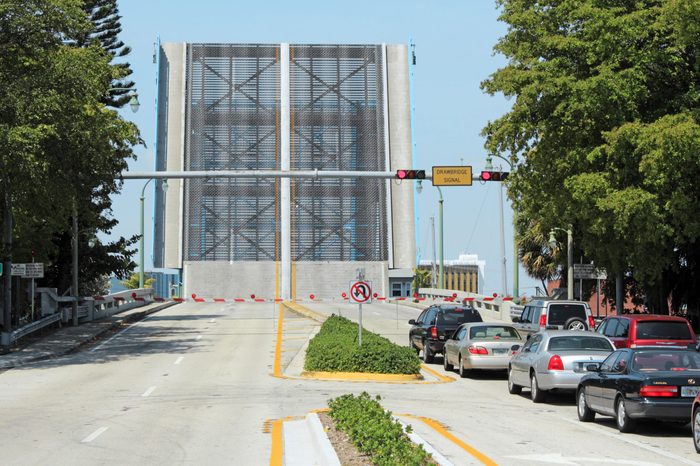
Waiting for a drawbridge
It might seem like an inconvenience if you live in an area near the water and the drawbridge goes up at 7:30 in the morning during rush hour. But what many people don’t know is that the people traveling on waterways get to go before people on highways. “If a boat’s coming up the river, it has the right of way,” Gillmer says. Of course, drawbridge lifts are often scheduled for specific times every day, so you can plan around them. Still, it’s a good idea to be prepared if you ever get stranded, so here are some items you should always keep in your car.